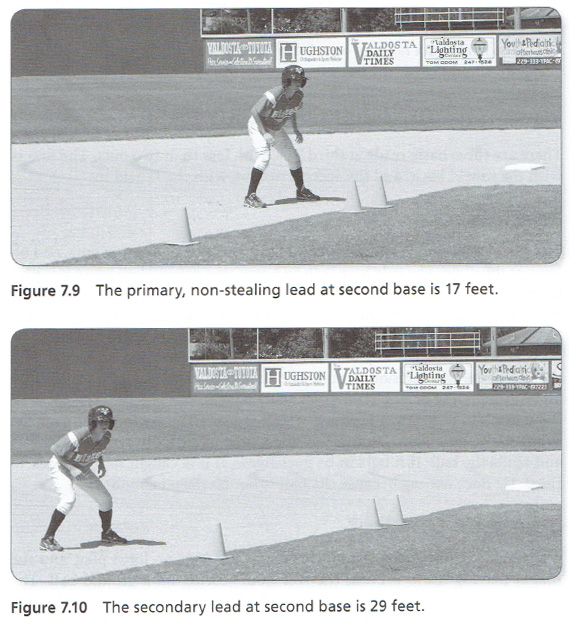|
By: Todd Guilliams Originally Published in: High-Scoring Baseball Provided by: Human Kinetics Knowing the positioning of the defense is more important when you are on second base because more balls will be hit behind you. By knowing where the defensive players are positioned you can make most of your decisions with-out having to turn around and wait for the play to develop. The depth of the lead is determined by the number of outs. With no outs you are in a straight line with third. With two outs you take two steps straight back of the base line to facilitate the turn at third base in the event of a base hit. Know your verbal commands from the coach and what they mean. For example, "OK" means take another step, "Careful" means stop, and "Back" means exactly that. You need to keep your eyes on the pitcher when taking your lead. The coach is responsible for not letting the runner get too far off the bag and learning which runners can react quickly and which ones are slower to react. Checklist: Runner on Second
Primary Lead and Secondary Lead The same rules apply at second base as at first base when taking your primary and secondary lead. The difference is in the distance of each and the increased reaction time in responding to the pitcher's pickoff move. The distance of the primary, non-stealing lead is 17 feet (5.2 m) (figure 7.9). Start with your right foot and takes five steps followed by one sideways shuffle, bringing your left foot to your right foot and resetting your feet. The secondary lead at second base is 29 feet (8.9 m) (figure 7.10). This aggressive secondary lead must be practiced, but it will ultimately lead to more runs scored. We have all seen runners get thrown out at the plate on bang-bang plays. A better jump and a better lead increase the odds of being safe.
|







